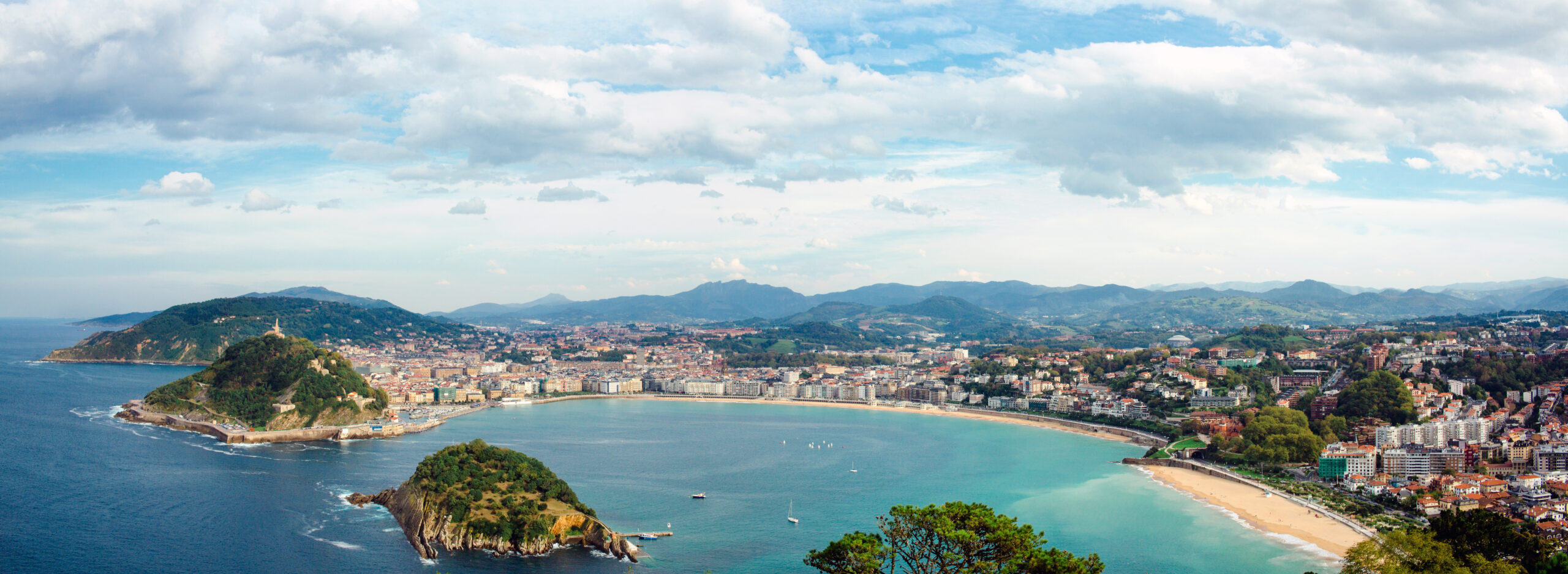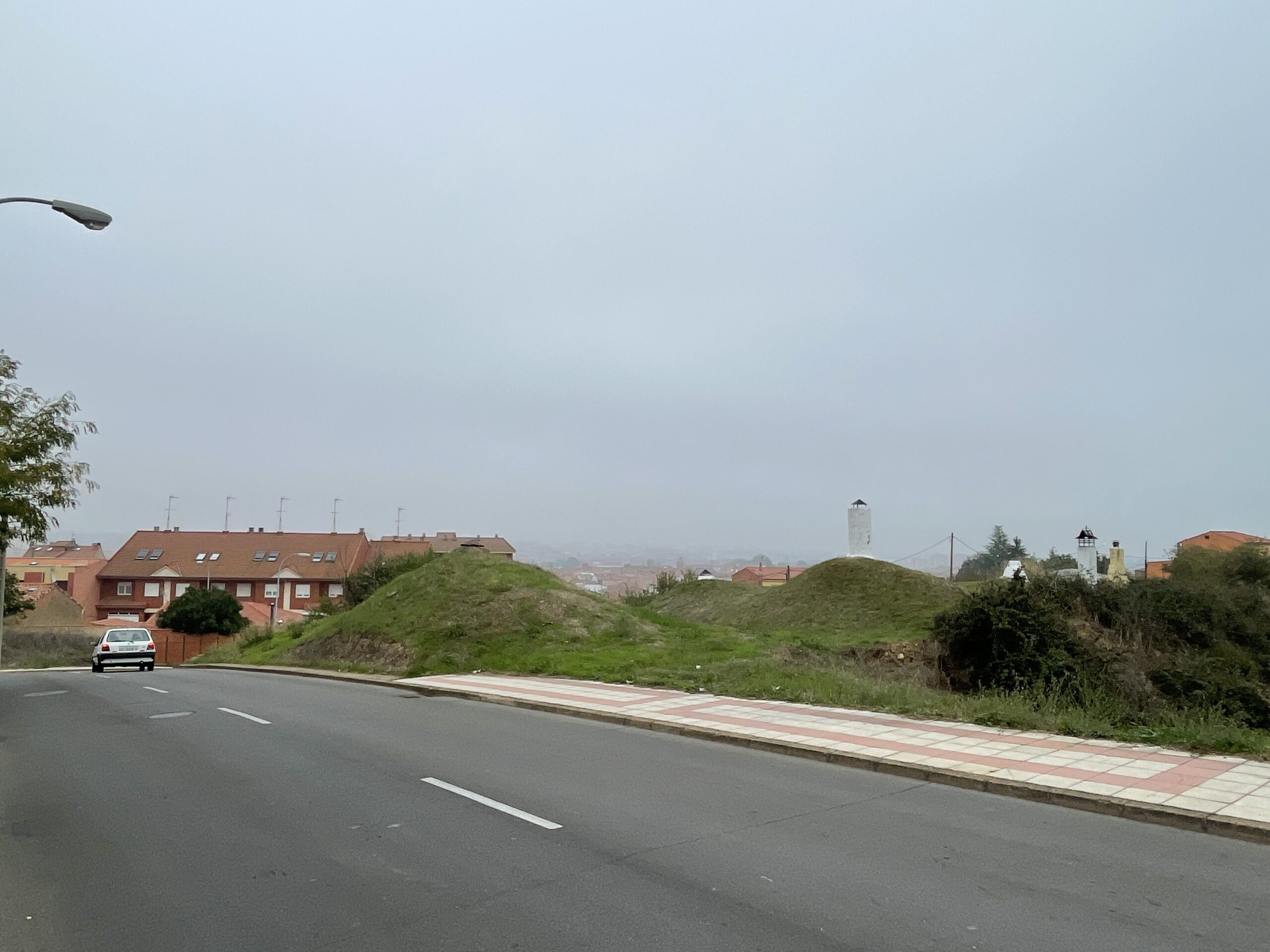Camino Del Norte
Begin your Camino in Basque Country through gently rolling green hills with occasional glimpses of the Bay of Biscay. Cross the Río Orio into the well-preserved port town of the same namesake (Orio). Marvel at the Iglesia de San Nicolás de Bari with its pedestrian bridge that spans the Camino. End the day in Zarautz where Magellan’s ship La Vitoria was built. Dip your toes in the water in the region’s longest beach as well.


Today’s route has a nice variety of sea landscapes, tranquil hills, and beach towns. There are a few route options today depending on if you want higher inland hikes or lower coastal hikes. You cannot go wrong either way with stunning upland views or walks right along the coast. All paths take you through Zumaia, a town often the victim of piracy that developed with a 13th-century monastery. Art lovers enjoy the Museo Zuloaga with works by El Greco and Goya among others. The somewhat frightening gargoyle-lined entrance and 15th-century Romanist altarpiece of the Iglesia de San Pedro is also worth a visit.
Before leaving Deba check out Iglesia de Santa María. It is one of the region’s finest churches with its intricate Gothic entrance including 6 apostles, 38 angels, virgins, and martyrs on the frieze. Leave the coast and enjoy the remote mountainous countryside as you make your way. Services are fewer and farther between today, so pack accordingly and soak in the relative solitude. An important site to see in Markina-Xemein is the hexagon-shaped Ermita de San Miguel de Arretxinga church from the 11th century built around 3 visible Megalithic stones.


Forests and flowing streams accompany you on your walk through the rural countryside today. The Monastery of Zenarruza is your first picturesque stop, then end your day in the town where Picasso made one of his most famous paintings (Guernica) highlighting the damaging power of new technology.
The first half of today’s walk is pleasant enough through to Goikolexea followed by a long, flat course of highway. The Iglesia de San Emeterio y San Celedonio in Goikolexea was built in memory of martyred Roman legionnaires. The end is in sight once you reach the peak of Monte Avril. Gaze down upon Bilbao then descend to the long set of stairs into the Plaza de Unamuno.


Wake up and see what type of Camino beckons you today. You can take a more direct, flat, and urban path to the midway point of Portugalete or choose the longer, hillier, but more scenic route. Both paths meet in Portugalete near the Basílica de Santa María which was built about the time Columbus began his journey to the New World. End your day with a little beach time as you approach Pobeña.
Enjoy a stunning coastal walk in the morning along a path that follows a former railroad track that carries supplies to docked ships. You can even still see the old wharf where cargo was loaded onto ships at the path’s end. Stay coastal today partially on the highway or head inland at Ontón for quieter roads. Either way, finish up at Castro-Urdiales without missing the imposing Iglesia de Santa María de la Asunción. This fine example of Gothic architecture gives you a beautiful overlook of the town and water.


You will encounter the greatest variety of terrain today on the Del Norte. You will wind through gentle hills with coastal vistas, walk the highway for a bit, and then head inland for green valleys and rocky hilltops. Then finally deposit your weary body at Laredo’s sandy beaches.
Catch the ferry across the river mouth to Santoña, the town where Columbus’ Santa María was built then continue a coastal walk for part of the day before you move inland on quiet country roads to Güemes.


Journey back to the coast then along a beautiful footpath paralleling the cliffs edge all the way to Somo. Then take a relaxing ferry ride to the capital of Cantabria, Santander. This bustling city was an important Catholic pilgrimage destination due to indulgences received by visiting the relics of Saints Emeterio and Celedonio. Today those relics are housed at the Catédral de Santander built upon Roman ruins that you can view through a glass floor.
The official route for today involves lots of flat, paved roads without the stunning surroundings of the past few days. There are a couple of variants that improve the scenery, but add 4 km to the walk avoiding the short train ride from Boo de Piélagos to Mogro. Once you arrive in Santillana’s perfect medieval center with the 12th-century Colegiata de Santa Juliana you will be glad for the trouble.


Lots of pavement to walk today, but plenty to see from verdant vistas to church towers. The 18th-century Iglesia de San Martin de Tours is a Baroque-faced church not to miss. Cóbreces breaks up the stone village scenery with the bright colors of its church and abbey. Your final stop in Comillas is noteworthy for its excellent architecture including the Antoni Gaudi designed buildings.
End your time in Cantabria today with great variety. Notably differing architectural styles, river crossings, and a nice beach section will keep your attention. 8th century Castillo del Rey ruins dominate San Vicente. Admire the coastal views as Schubert’s Ave Maria plays every 15 minutes from a 13th-century Gothic bell tower. As you arrive in Colombres and enter the region of Asturias your surroundings will feel more wild and rugged.


Relief! Today’s hike brings you off the pavement and back to dirt roads and coastal footpaths. Nature vies for your attention today with the sea to your right, Picos de Europa mountains to your left, and the bufones (blowholes) created by cracks within the rock cliffs at your feet. End the day in the lively beach town of Llanes with an 800-year-old wall surrounding you.
Peaceful monasteries near the sea mark your journey today. This pleasant walk can take you near the picturesque Iglesia de Nuestra Señora de los Delores and the ruins of the Monasterio de San Antolín.


Today is your last coastal day before joining the Camino Primitivo and heading inland for good. You will traverse three awesome beaches and end the day on a fourth excellent beach. A 15th-century pilgrims’ fountain refreshes you in Cuerres. If you are able to reserve a tour, visit Ribadesella’s 15,000-20,000-year-old cave paintings at the Cuevas de Tito Bustillo.
Head inland today for a peaceful, easy walk that will take you past the Iglesia de San Salvador, one of the oldest churches on the Norte dating back to 921. Enjoy a crisp apple or tart cider in Villaviciosa, the “apple capital” of Spain.


Today you split from the Camino Norte to join the Camino Primitivo, the first major pilgrimage route to Santiago. The traditional start to the Primitivo lies in Oviedo, but your trek on this Camino will start two days and about 44 km earlier than that. A walk through San Salvador de Valdediós brings you to the pre-Romanesque (893) Templo de San Salvador and the 13th-century Monasterio de Santa María. Both landmarks make this a religious center and an important spiritual destination of the Asturias region.
The approach to Oviedo lacks the usual stunning landscape and points of interest, but any boredom will be quickly remedied in Oviedo. The original 9th century cathedral in Oviedo was built over 8 centuries and therefore features a wide variety of architectural styles. The Capilla de San Miguel holds the cathedral’s most precious treasures including a silver reliquary chest said to contain a vial of the Virgin Mary’s milk and one of Judas’ 30 pieces of silver. You will also find three pre-Romanesque churches in Oviedo – some of the finest examples of 9th century Christian European architecture.

Embark on a transformative journey along the Camino Primitivo, the historic and spiritually rich pilgrimage route to Santiago. Experience the awe-inspiring beauty of the Asturias region, from the pre-Romanesque treasures of San Salvador de Valdediós and the Monasterio de Santa María, to the architectural wonders and religious relics of Oviedo. Immerse yourself in centuries of history and discover the true essence of the Camino. Join us on this profound adventure of self-discovery. Sign up now and let the Camino Primitivo guide you towards a life-changing experience. Follow My Camino – your path awaits.
Or end your Camino here on the Del Norte and savor the expereiences you have had and the come back to walk the rest of the Camino into Santiago.
Click here to sign up!
